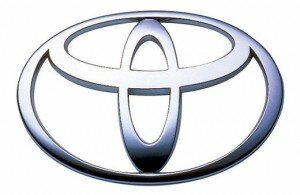Posts Tagged ‘brand promise’
5 ways brands can engage on climate change
2010 tied 2005 as the hottest year on record, according to reports last week. The news came as flood waters overwhelmed Queensland, Australia and mudslides killed hundreds in southeast Brazil. The natural disasters were made worse by global warming, scientists told ABC News.
Meanwhile, a new poll shows only 40% of Americans believe global warming is caused by human activity. And New York Times environmental blogger Andy Revkin said in 2010 “global warming, the greatest story rarely told, had reverted to its near perpetual position on the far back shelf of the public consciousness — if not back in the freezer.”
Is that how it is for you? Is climate change even on your radar screen as a business? And if it is, are you doing something about it? Or are you treating it like some harmless object along the distant horizon?
What your brand can do
I won’t make an argument for why you or your business should care about climate change. I’ll leave that to authors like Bill McKibben, whose 2010 book “Eaarth” is an unsparing description of a world already scarred by global warming and a guide to how we must now live in it.
What I would offer are five ways your business brand can engage stakeholders on climate change. After all, a large minority of Americans believes humans are causing global warming and increasing numbers of customers are holding business accountable. On the opportunity side, brand differentiation around climate change is there for the taking in many markets.
- Brand as promise: You can’t waffle on climate change. Choose to believe the scientific evidence and climate scientists like this one who states unequivocally, ”We’re observing the climate changing – it’s happening, it’s real, it’s a fact.” Take a stand. Let your stakeholders know your business cares deeply about the trajectory of the world’s climate. Then show them what you’re doing about it through your products, services, operations and culture.
- Brand as meaning: Customers, employees and, indeed, all stakeholders are in constant search for meaning. That’s life. Connect what you’re doing on climate change to what matters to your stakeholders. And what matters to most of us is that we and those we care about achieve happiness and avoid suffering. The climate is now on a very unhappy path. Be an example for a different way forward.
- Brand as emotion: We all experience basic emotions such as joy, love, anger, sadness, surprise and fear. For many of us, the thought of climate change overwhelms us and triggers undesirable emotions. How much more desirable is a brand that taps into the joy and satisfaction in caring for our planet and its current and future inhabitants?
- Brand as story: Humans connect through stories. It’s how we entertain, educate, preserve our cultures and instill values. Your brand is a story. Place it within the Mother of All 21st Century Stories — climate change — and watch as new, meaningful and emotional connections get made.
- Brand as experience: No matter what we tell others about our brands, what determines their fates are the experiences others have of them. When someone interacts with your business or product, they experience your brand as a promise kept or a promise broken. Promise to be on the right side of climate change and then give others the experience of standing with you — and you with them — in creating a world hospitable to all.
Like sustainability, branding needs image change
A new study indicating the recession has crowded out concern for the environment prompted the New York Times to ask: “Is ‘thinking green’ an economic luxury?”
Uh, yeah. Not that it should be. If ever there was an economic necessity it would be to think green and adopt sustainable practices. But that’s just me speaking. My professional niche is sustainable branding, so I see business through the lens of sustainability. Plenty of recent studies show the continued gap between intention and action on sustainability among individuals and businesses.  Neither thinking nor acting green is considered essential.
Neither thinking nor acting green is considered essential.
Like sustainability, branding is viewed as a luxury by most in business. Ironically, that’s farthest from the truth in lean times like these. When acquiring and keeping customers is hardest, a business can least afford to ignore what creates competitive distinction and customer relevance — namely, its brand.
Branding’s image problem
Branding suffers from an enduring image problem. Mention branding, and dollar signs come to the minds of most executives. In a recession, that’s a show-stopper. The problem is branding is equated with design, advertising, marketing communications — all of which cost money. But brand promotion is only part of the branding equation — the most expensive part.
Yes, at some point, you have to build brand awareness, preference and loyalty. And that requires a financial investment in marketing. But the most essential components of building your brand — defining what it is and baking it into your culture, operations and products — are really just best management practices.
Branding is little different from other standard best practices, such as developing financial budgets, employment policies or product development plans. Sure they take some time and money to produce, but that’s simply the requirement of being in business, no matter the economic climate. So it is with branding.
When businesses declare branding a luxury they can’t afford, they are unwittingly saying, “We aren’t going to take the time to decide who we are as a business, what we stand for, what makes us distinct and why we matter as a company. And we’re not going to worry about whether we as managers and employees are keeping our promise as a business to customers and all our other stakeholders.”
Consequences of brand neglect
I used the word “unwittingly” because I don’t believe most business executives understand the consequences of neglecting their corporate brand until more prosperous times return.
 It’s one thing to slash advertising budgets or postpone the redesign of the firm’s visual identity. It’s quite another to lose sight of what makes your business distinct and relevant now, today, in an economy fundamentally different from just two years ago. Or to postpone accountability for whether your business is consistently delivering the customer experience you promise.
It’s one thing to slash advertising budgets or postpone the redesign of the firm’s visual identity. It’s quite another to lose sight of what makes your business distinct and relevant now, today, in an economy fundamentally different from just two years ago. Or to postpone accountability for whether your business is consistently delivering the customer experience you promise.
From the inside looking out, your brand is your over-arching promise to stakeholders. From the outside looking in, your brand is the image stakeholders have of your business, based on direct experience or word-of-mouth. Any business with customers or employees has a brand image. The question is whether the business understands and cultivates that image or leaves the task to others, such as competitors who are only too willing to tell your story for you.
At its most basic, branding means ensuring the experience aligns with the promise. That’s not accomplished by simply spending more money on clever advertising or glitzy marketing events. Much more important is being clear about what your promise is as a company and how your employees, products and practices deliver on it day after day, regardless of the economy.
Branding as necessity
Seen from this perspective, branding is no luxury. And it doesn’t have to be about spending big bucks. What it does require is time and commitment from senior leadership to ensure the brand:
- firmly establishes competitive distinction and customer relevance
- is understood and fulfilled across the company
- is positively perceived by customers, employees and other key stakeholders
Branding is an all-company, everyday exercise in earning and keeping customers and creating competitive advantage. When times are toughest, attention to your brand becomes more crucial than ever.
Does branding need to be on your list of business necessities? If so, I invite you to get in touch and explore how to make that happen.
Sustainable branding: Promise is only half the story
“Promises are like babies,” an unknown author once said. “Easy to make, hard to deliver.”
Sounds like a good reason to never make a promise. Or better yet, good reason to think long and hard before making one.
Countless branding books and consultants describe a brand as a promise. That’s an inside-out view. If I’m on the outside looking at your business, I don’t care whether you make a promise. I care whether you keep it.  My guess is millions of Toyota owners feel similarly today about that company’s promise of quality.
My guess is millions of Toyota owners feel similarly today about that company’s promise of quality.
Promises have no value until or unless they’re consistently fulfilled. That gets lost among many who make their living in branding, communications and design. I used to be among them. Branding meant communicating a promise and persuading others to pay attention. If I did that well, I was doing my job.
My certainty about all of this gave way as I delved deeper into sustainability and carved out a sustainable branding practice. Everywhere it seemed, marketers were jumping onto the green marketing bandwagon. Meanwhile, consumer complaints of “greenwashing” kept growing as marketers used one hand to paint their companies or products green and the other to cover their eyes to the brown.
Words and deeds
Sustainable branding is not simply marketing communications by another name. It’s aligning what you stand for as a business with what people experience from you. Greenwashing does the opposite: It misaligns words and deeds.
Companies have been saying one thing and doing another forever. What’s changed is the technology and desire to call them out. Social media tools such as Twitter and Facebook and user-generated sites such as Yelp will expose hypocritical businesses in a heartbeat. And nowhere is the B.S. radar on higher alert than when a company speaks of social or environmental responsibility. People may overlook the advertisement that overstates a product’s benefits. But many can’t wait to bust the company that promises — and fails — to do good.
Carefully researched, considered and cultivated, a brand moves a business toward competitive distinction and customer relevance. Unfortunately, most businesses leave brand management to marketing communications. They equate branding with names, logos, taglines, messages, advertising campaigns and a consistent “look & feel.”
Where the buck stops
What our businesses say and how we look matters when separating ourselves as a brand. But not nearly as much as what we do as a business.
Want your brand to stand out from the crowd? Then let your actions do more of the talking. Nothing communicates as convincingly as a company whose employees, culture and operations consistently deliver a distinct, relevant product, service or experience.
This doesn’t happen by accident. It requires a CEO and senior managers who ensure their company walks it talk. Unless your marketing department runs the company, the branding buck must stop with the people who have ultimate authority to motivate, train or cajole everyone to deliver on the company’s core promise.
Stepping onto the path of sustainability makes this more imperative than ever.
When you pledge to build a more sustainable company, it’s like handing a magnifying glass to your customers, employees and other stakeholders and inviting them to inspect your every move. Witness the emergence of greenwashing watchdogs.
Living the brand
The prospect of greater scrutiny frightens some executives. Others say bring it on. They know integrity and accountability have always been hallmarks of great companies. And they don’t fear the added weight of social and environmental responsibility that a commitment to sustainable business practices demand. They’re simply trying to do the right thing.
But even their firms may need help living their brands. That’s why I’ve formed a team of experts in organizational development, sustainability, research, design and storytelling.
I look forward to sharing more about our collaboration soon. But you can be sure we’re clear on one thing: Making a promise is the easy part of branding. It’s the delivery we need to worry about.
Five questions your business should be asking
My business inspiration today comes from an unlikely source, Palestinian Prime Minister Salam Fayyad.
Tom Friedman, in his latest New York Times column, credits Fayyad for his leadership in improving conditions in the West Bank. Here’s the part I like. Freidman quotes Fayyad about his approach to governing: “tell people who you are, what you are about and what you intend to do and then actually do it.”
Those are words to live by as a politician. I could imagine them coming just as easily from the mouth of an effective business owner or executive. Fayyad’s simple philosophy can instruct any of us in business, especially after an unforgivable period of corporate excess and ethical lapses have left so many of us staggered, angry and jaded. In this environment, opportunity lies with businesses that act with higher purpose and integrity — the ones that keep their promises.
Here are five questions every business ought to be asking (and answering) today:
- What is my business ultimately pursuing? For many companies, the honest answer to this one is maximum shareholder return or more sales or more profits. The pursuit is financial. Not that there’s anything wrong with that. But it’s worth asking, is financial success really what you want the measure of your business to be? Or is money only an enabler, making it possible to pursue a larger social or environmental vision?
- What is my business trying to accomplish? I’ve heard vision described as something to be pursued and mission as something to be accomplished. I like that distinction. For example: “We pursue clean, fresh water for all. Our contribution to this effort is producing low-cost, long-lasting water purification systems for individuals.” I also think of mission as the reason a business exists. We exist to accomplish something. What is that for your business? Is your purpose clear? Does it inspire you and your employees and customers?
- What do we promise? Ask yourself what you want every stakeholder — customer, employee, supplier, partner, investor, community citizen — to experience from your business. This is an experience you strive to create for everyone, at all times. It’s what you stand for, the essence of your business. It’s what keeps customers returning and employees staying. And it can’t be taken lightly. As Fayyad has demonstrated, doing what you say you’ll do can have profound impact.
- What makes us different? So you’re clear-eyed about the difference your business is trying to make and the experience you want others to have of your firm. The question now is where that places you versus the businesses competing directly or indirectly for the customers and other stakeholders you’re targeting. Study your competitors and what others are saying about them. Ask customers and others what makes your firm different. If you don’t like their answers, you have some work to do.
- What makes us relevant? A company may have the distinction of producing the world’s only sustainably made, solar-powered 8-track player, but, really, who cares? Sure, the business is different. It’s also irrelevant! The key is to be distinct and relevant. What do your stakeholders most value about your firm today? Do you matter to them in important ways or only superficially? Survey them to find out.
My work is helping businesses wrestle with these fundamental questions. It’s far more than a marketing or branding exercise. My clients establish their firm’s reason for being and core identity. They give purpose and direction to the decisions and actions of every individual and group within their company. Best of all they put themselves in position to make a difference — “and then actually do it.”


